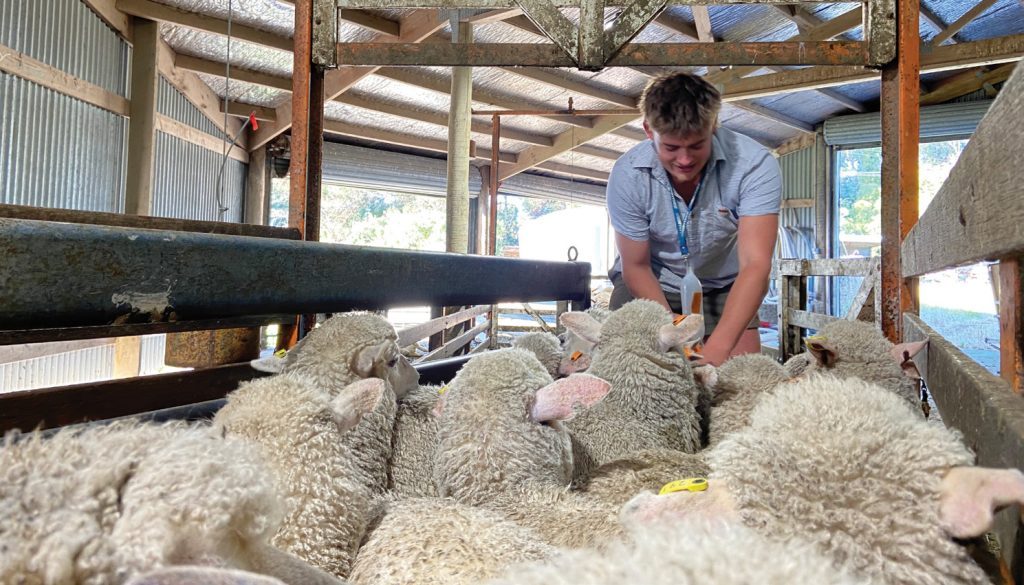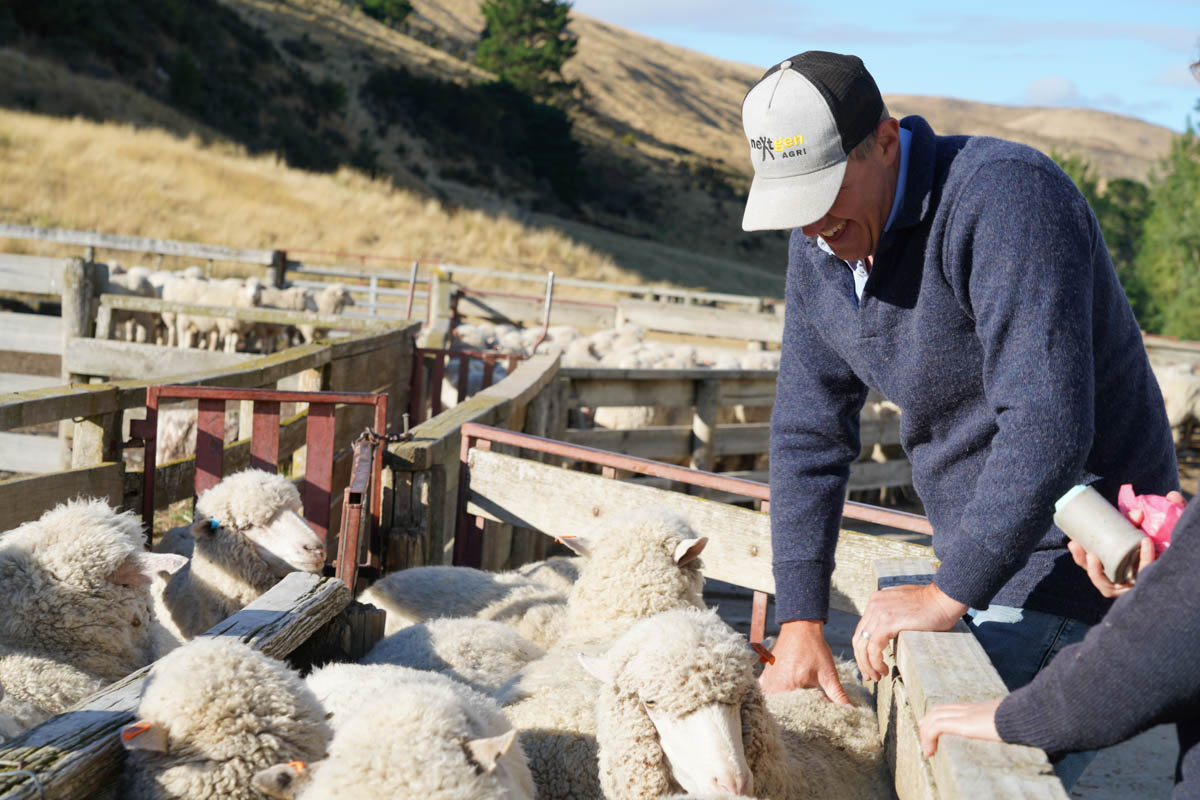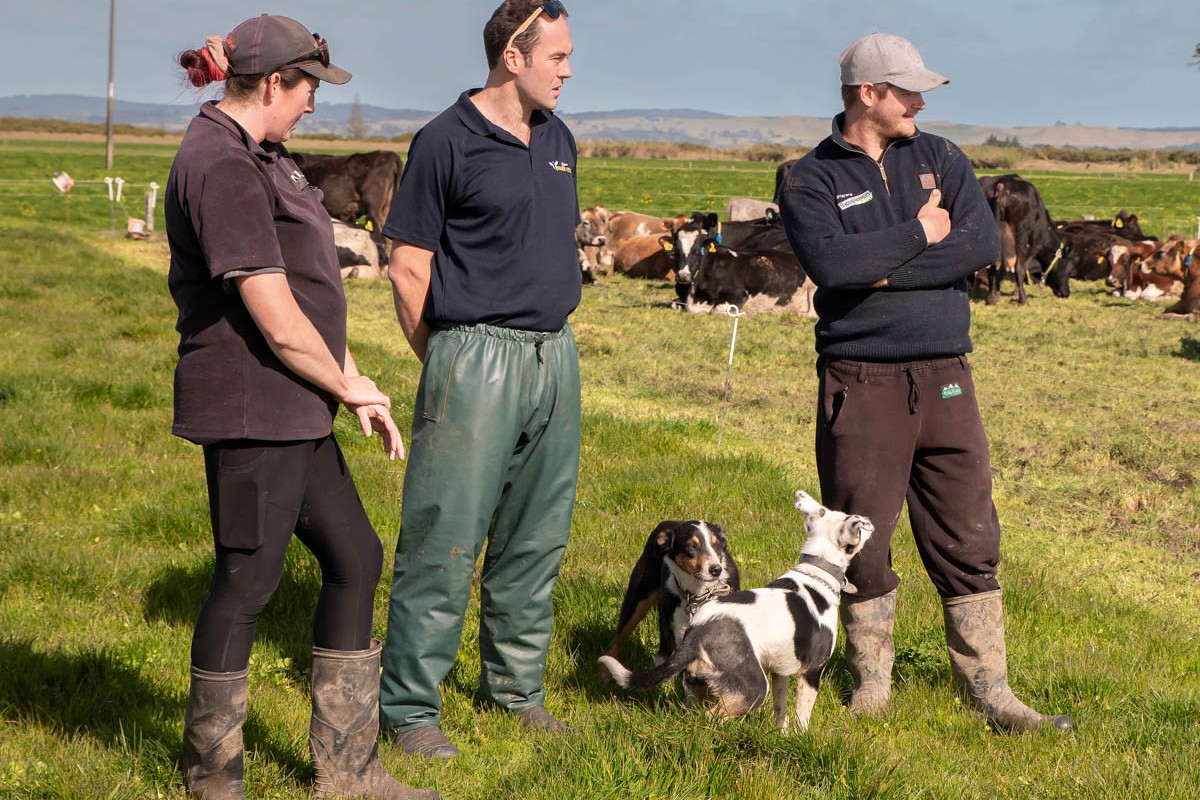Buy-in rams quicker option
Mid- and fine-wool breeds miss out on facial eczema tolerance as the core genetics is limited to strong-wool studs from the North Island, Joanna Grigg reports.

Mid- and fine-wool breeds miss out on facial eczema tolerance as the core genetics is limited to strong-wool studs from the North Island, Joanna Grigg reports.
Buying in FE Gold genetics is one way to introduce the best facial eczema (FE) tolerance to previously untested South Island flocks.

Buying genetics is easier for strong wool flocks than fine. No surprise, all member studs of the high-level facial eczema ram testing group, FE Gold, are based in the North Island. Romney, Coopworth and Perendale are the core genetics among the 17 stud members. No mid- or fine-wool studs are listed. To be an FE Gold member, rams must be dosed with sporidesmin at 0.60mg/kg. The stud must have at least 10 years of testing history. About 10% of sale rams need to be tested for tolerance and all rams used are Ramguard tested. The FE Silver brand recognises a committed testing programme, but a slightly lower dosage to sheep.
For Merino and mid-micron breeders, including FE Gold, genetics is more difficult, given wool type is so different. Starting a Ramguard testing regime in a naive flock is an option, although it’s the slow way. A blood or saliva test being developed with Beef + Lamb NZ (B+LNZ) funding could speed up the process.
AgResearch technical officer for Ramguard Neville Amyes says ram-dosing is the only commercial test for tolerance.
He says genetic selection based on this does work. The proportion of animals able to withstand the standard toxin dose of sporidesmin increases 3.5% each year through genetic selection.
“This figure comes from older work but is still true.”

FE tolerance is heritable at 0.45.
In his job as administrator, Amyes helps design testing regimes for breeders and collates the data.
“I check the test dose given from previous years and decide whether to increase the dose rate, based on the number of reactors.”
Testing at the introductory rate of only 0.2mg/kg and selecting the tolerant genetics, will take a long time to build good tolerance among the flock.
“You are half-way up the ladder if you buy a ram tested at the higher level of 0.6, then test his progeny at 0.4mg/kg,” he says.
“You make better progress buying-in the genetics.”
The 1991 work by Smith and Towers showed that 40% of the difference in tolerance to FE seen between individuals was due to the sire difference.
Amyes says some South Island breeders have tested some of their rams using RamGuard services, but he says dosing is not really happening extensively in the South Island. He describes it as intermittent. The cost is in the hundreds of dollars for a ram, so there needs to be a strong commercial drive.
Three Canterbury breeders have started using the test in the past two to four years, Aymes says, including one Merino breeder. Two southern South Island breeders are using it which has 80 clients in total.
One option for studs under natural FE pressure is to test rams using the GGT blood test from a pathology laboratory and remove the worst performers before doing Ramguard dosing.
Amyes says it weeds out the most vulnerable.

The blood-sample-based test, if successful, will be cheaper and may supersede FE dose testing.
“But in the meantime, Ramguard facial eczema testing is the main way.
“South Island breeders need to start thinking about how they are going to do this.”
Southern breeders on board
Peter Moore produces Romney and Poll Dorset-cross rams on Moutere Downs, Tasman. He remembers facial eczema outbreaks in the top of the south, starting in the 1980s.
“We saw heavy sheep losses and lambs were flicking their ears when standing in the sun.”
In the 1990s, he moved to buying rams selected for both parasite and FE tolerance. These were sourced north of Taupo.
“In a way I bought an insurance policy in, without specifically going after it. The facial eczema selection tied in with worm resistance selection.”
The most recent ram he bought was FE Gold standard – a deliberate step to up the game. Despite feeling more relaxed about FE tolerance in his home flock now, some clients are requesting he start testing his own rams with Ramguard.
“I was waiting for a commercial blood test, but in the meantime will start using the Ramguard dose test.”
Since Moore has some tested-genetics in the flock, it is likely he will start dosing above the base rate, at 0.3mg/kilograms liveweight (kg LW). The base rate is 0.2mg/kg. The obvious candidates to test first are those sons of sires or dams from eczema-tested flocks.
This dual approach of selecting among his own genetics, plus buying in tolerant genetics, should bring faster results, he says. The FE Gold website says a new breeder testing a large number of rams, and only using the most resistant rams, will quickly overtake a breeder who tests only a few rams and/or uses rams from low on the resistance ranking. In other words, how well a breeder is selecting for FE resistance is more important than how long they have been testing.
Andrew Tripp of Nithdale stud, Southland, says worm resistance is the most sought-after animal health trait that his clients are seeking in his Romneys. But some North Island and Nelson clients are also asking for FE tolerance. Climate monitoring has shown average temperatures at Nithdale have lifted 1.5C over 20 years.
He says modelling has shown some Southland areas may be at risk in the next 20 years – those areas over 14C with a high incidence of rain, can bring facial eczema.
“It takes time to breed tolerance, so we might as well start now.”
Nithdale stud first tested a selection of ram hoggets using Ramguard in 2015. Several sires had good tolerance, including one sire line dosed at 0.5mg/kg showing nil liver damage in five of the nine progeny. One became a stud ram and was ranked 15th on the June 2019 New Zealand Genetic Evaluation ‘Maternal worth with FE’ list. Tripp puts this down to buying-in top FE-tolerant sires.
“It shows you can breed for it in Southland, although North Island breeders might not believe it.”
He says the stud uses Ramguard on some rams, every few years. In tandem, genomic tests are done looking at a range of genes associated with FE tolerance. Genomic breeding values from progeny are generated weekly. While the FE-related genetic results are not incorporated into Nithdale’s main selection index, the data sits alongside and can be used to help select rams for clients.
Tripp says they are well-ahead with their worm resistance breeding, started over 30 years ago, and is incorporated in their index. “The next to be bought in will probably be methane breeding values and eczema breeding values.”
Tripp says their flock hasn’t moved ahead a lot in terms of overall tolerance, but has some sire lines that would have some tolerance to the disease in an FE environment.
Testing fine wool flocks
Southern Cross (SX) is a joint venture of six sheep breeders, based on Merino or three-quarter Merino ewes. The nucleus flock is held at Stonyhurst, Canterbury. Initially 40 rams across a range of fine wool genetics were tested using Ramguard. Charlie Douglas-Clifford hosted the work at Stonyhurst and says the fine wool industry was trying to get a feel for where the genetics were at for tolerance. In recent years, 50 to 60 rams have been tested to get information on a wide range of various sires used in the breeding programme.
Ben Todhunter from Cleardale Stud in the Rakaia Gorge, is part of the SX sheep breeding programme, He says the Ramguard test results on rams showed they were sitting midway in tolerance with some outliers. He would like to bring FE tolerance testing into his Cleardale SX flock but the cost, welfare aspects and finding genetic linkages are barriers at the moment.
“It’s something we might continue in the future.”
Cleardale SX rams are selected for ability to tolerate wetter conditions and rams have been sold to Hawke’s Bay, King Country, Wairarapa and Gisborne. They are going over crossbred flocks to fine them up.
Douglas-Clifford says when the FE alert was raised in Canterbury this season he made a big effort to control pasture covers this summer to reduce risk from fungal toxins.
“I sacrificed a few paddocks and controlled the rest.”
The Southern Cross breeding programme is the ideal testing pot, he says.
“The concept is a superior genetic pool to draw rams from and try new things.”
He says six studs contribute rams to find the best, and sometimes they’ll use external AI semen. Then all partners get a crack at the best genetics.
Ramguard is still being used to test tolerance on both the Stonyhurst SX line and nucleus SX line. Dosage will be about 0.33mg/kg.
“We are going to do 50 this year, which is a considerable number.”
This wide, ram testing regime is needed, Douglas-Clifford says, as the fine wool breeds don’t have the level of genetic connections yet, for tolerance.
“The quicker we can progress for our breeding group the better, although it might take 10 to 15 years to get to Gold standard dosing rates.”
SX breed objectives are producing quality wool between 21 and 23 microns, a 4kg fleece, and 130–140% lambing, yielding 20kg carcaseweight lambs. Good FE tolerance would be another string to the bow.
“It would be a point of difference, to be a leading fine wool breeder in this space,” Douglas Clifford says.
Gene link project
All of Pamu’s (Landcorp Farming) South Island flocks are run south of the Waitaki.
Despite the southern climes, Pamu head of ventures Jim Inglis says southern flocks are preparing for facial eczema pressure by integrating proven North Island genetics.
“We are quietly lifting tolerance, off the back of our North Island breeding, to make genetic progress.”
The blood test in development would be a good step-up from dosing rams, although he acknowledges the millions of sheep across New Zealand that have benefitted from the dose test regime.
Inglis says Pamu and Focus Genetics have started a project looking into traits and extending genetic linkages from existing maternal programmes into hair, shedding and fine wool sheep. This is with assistance from a large team of industry partners. The idea is to benchmark animals and develop genetic linkages, including those for FE tolerance.
They will feed into the existing breeding programmes, to make gains. This will be done using Beef + Lamb NZ’s nProve tool.
He says they are working with 25 fine and no-wool breeders, including several of the Southern Cross fine wool studs.
Looking to buy in tolerance
Bringing improved facial eczema tolerance into the Headwaters ram genetic pool will be done through partnering and buying genetics.
Headwaters general manager Tim Saunders says this approach is preferred over ram dosing. Good options among existing stud genetics also meet Headwaters meat quality requirements for the Lumina brand.
The collective of elite and multiplier properties that work together as Headwaters breeders are focusing on breeding rams both for North and South Island farms. Focus is shifting to becoming a preferred supplier of terminal rams, with the option for progeny to supply the Lumina meat brand.
“The bonus of a terminal lamb is that it finishes early, and is off the property before the facial eczema peak.”
While the need for tolerance is less in this case, Headwaters understands FE is going to become more of an issue.
Saunders says the long-term plan is to have FE a key part of their genetics breeding programme, through partnering with high FE tolerant studs in the North Island, Saunders says.
“Facial eczema is just one challenge coming at us, like methane reduction.”




